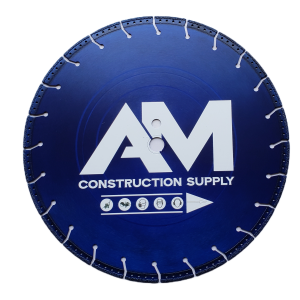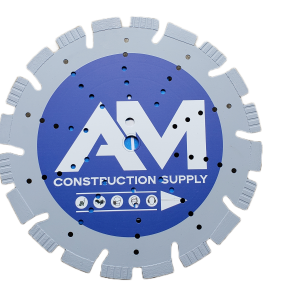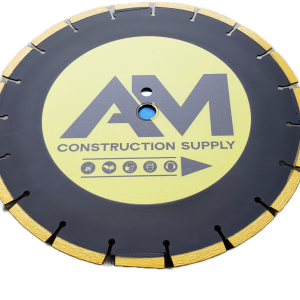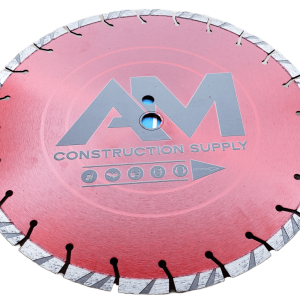Choosing the right tools has been a cornerstone of craftsmanship throughout history, from ancient stonemasons to modern-day artisans. In the realm of stone cutting, the quest for precision and efficiency has led to the development of various tools, among which diamond blades stand out. The best diamond blade for cutting stone isn’t just about getting the job done; it’s about transforming hard, unyielding material into a masterpiece with minimal effort and maximum accuracy. This guide dives deep into what makes a diamond blade exceptional for slicing through stone, focusing on durability, cut quality, and the technology behind these cutting-edge tools. Whether you’re a professional looking to enhance your toolkit with bonds and diamonds or a DIY enthusiast tackling your next project, understanding these aspects will ensure you make an informed choice.
Key Takeaways
- To ensure optimal cutting performance on stone, select a diamond blade based on the type of stone you’re working with, as discussed in “Choosing the Right Diamond Blade.”
- Regular maintenance and understanding the core principles of how diamond blades work, as outlined in “Understanding Diamond Blades” and “Stone Cutting Essentials,” can significantly extend the life of your blade.
- Safety should always be a top priority; follow the guidelines in “Safety Measures” to prevent accidents during cutting operations.
- When considering a purchase, compare brands and read user reviews as mentioned in “Brand Comparison” and “User Reviews and Feedback” to make an informed decision based on quality and user experience.
- Look for blades that offer the specific performance features necessary for your project, such as those highlighted in “Performance Features,” to ensure efficiency and precision in cutting.
- Investing in high-quality diamond blades, as advocated in “Why Choose Quality Diamond Blades,” pays off in the long run through better performance, durability, and fewer blade replacements.
Understanding Diamond Blades
Composition
The diamond abrasive matrix, which bonds crucially, is crucial in a blade’s effectiveness. This matrix determines how well the blade can cut through stone. A high-quality matrix means the blade stays sharp longer and cuts more efficiently.
The disc quality also plays a significant role. It impacts the cutting precision and the tool’s longevity. A robust disc ensures smooth operations without premature wear or breakage.
Segment or rim height contributes significantly to a blade’s life span. Higher segments mean the blade can withstand more wear before needing replacement, extending its usefulness over time.
Types
There are three main types of diamond blades: continuous rim, segmented rim, and turbo blades. Each has its strengths and weaknesses concerning accuracy and chipping.
Continuous rim blades provide the highest precision with minimal chipping, making them ideal for delicate stone work. Segmented rims offer faster cutting speeds but may result in more chipping. Turbo blades strike a balance between speed and precision, performing well in dry conditions with less chipping than segmented rims.
For different stone cutting projects:
- Continuous rim blades excel in cutting marble and tiles.
- Segmented rims are suited for quicker cuts in granite and harder stones.
- Turbo blades work best for general masonry that doesn’t require a perfect finish.
Each type shines under specific scenarios:
- Use continuous rims for detailed work on softer stones.
- Choose segmented rims for large-scale projects where speed trumps perfection.
- Opt for turbo blades when working in dry conditions needing both speed and a decent finish.
Benefits
Continuous rim blades offer unmatched precision cutting, making them the go-to choice for tasks requiring fine finishes with minimal chipping. They are especially beneficial when working with fragile materials like porcelain or marble.
Segmented rim blades have a clear speed advantage. They’re designed for rapid progress in large-scale projects, slicing through tough materials quickly albeit with some trade-offs in finish quality.
Turbo blades provide a balanced performance in dry conditions, offering good speed without sacrificing too much on the precision front. They’re versatile tools suitable for various masonry tasks where neither extreme precision nor maximum speed is the sole priority.
Stone Cutting Essentials
Stone Varieties
The hardness of the stone significantly influences the choice of diamond blade. Harder stones require blades with a higher diamond concentration to cut effectively. Conversely, softer stones can be cut with blades that have a lesser concentration of diamonds. This distinction is crucial for ensuring both the efficiency of the cutting process and the longevity of the blade.
For granite, which is one of the hardest stones, opt for a diamond blade specifically designed for it. These blades usually have a high diamond concentration and a segment design that allows for clean cuts. Marble, being softer than granite, requires a different type of blade. One with a smooth edge and lower diamond concentration works best to prevent chipping along the cut edges. Limestone, even softer, needs a blade that can cut without causing fractures or loss of material integrity.
Cutting Techniques
Wet cutting and dry cutting represent two primary techniques in stone cutting, each favored under different circumstances. Wet cutting is preferred when precision is crucial and dust minimization is required. It keeps the blade cool and reduces wear, extending its lifespan. Dry cutting, on the other hand, offers convenience and speed, especially in outdoor settings where water supply might be limited.
Choosing the right blade for your cutting technique is paramount. For wet cutting, use blades designed to work with water. These often feature slotted or segmented rims that allow water to flow through, keeping the blade cool. For dry cutting, blades with a continuous rim are better suited as they minimize dust while providing cleaner cuts.
To optimize blade performance:
- Ensure the blade matches your stone’s hardness.
- Select based on your preferred cutting technique.
- Allow intermittent cooling periods during dry cuts to prevent overheating.
- Use steady pressure; avoid forcing the blade through the material.
Choosing the Right Diamond Blade
Blade Diameter
Diamond blades come in a wide range of diameters, from as small as 3 inches to as large as 30 inches. The size of the blade dictates not only the type of cutting machine it fits but also the depth of cut it can achieve. Smaller blades are typically used for detailed work on smaller projects, while larger blades are reserved for deep cuts and larger scale projects.
For residential projects like tiling or garden landscaping, blades between 4 to 12 inches are most suitable. They offer a good balance between precision and depth. Commercial projects, such as road construction or large building renovations, often require blades from 14 inches upwards. These sizes allow for deeper cuts into stone materials, making them ideal for heavy-duty tasks.
Segment Type
The segment type of a diamond blade plays a crucial role in determining both the cutting performance and the finish quality. There are three main types: continuous rim, segmented, and turbo segments.
Continuous rim blades provide the smoothest cut and are perfect for materials that chip easily, like marble or granite. Segmented blades have cut-outs which help keep the blade cool during cutting and are ideal for harder materials like concrete or brick. Turbo segments combine both speed and a clean cut by having a serrated edge, making them versatile for various stone materials.
For delicate stone work requiring fine finishes, opt for continuous rim blades. When dealing with tough stones that need quick cutting without much concern for finish quality, segmented or turbo segments are more appropriate.
Bond Hardness
The bond hardness of a diamond blade refers to how firmly the diamonds are held in place within the blade’s matrix. A simple rule is: the harder the material you’re cutting, the softer the bond should be. This ensures that new diamonds are exposed as needed to maintain cutting efficiency.
A soft bond wears down quicker but allows for faster cutting speeds when working with hard stone materials like granite. Conversely, soft stones such as sandstone require a harder bond to slow wear rate and extend blade life.
For general use on medium-hard stones like limestone or travertine, a medium bond offers a balanced wear rate and cutting speed. It’s important to select the right bond hardness to avoid premature wear on your diamond blade or inefficient cutting speeds.
Performance Features
Cutting Speed
Segmented rim blades stand out for their faster cutting capabilities. They slice through stone quickly, making them a top choice for efficiency. However, this speed comes with a trade-off. Precision can sometimes suffer when the focus is on speed. To get the best of both worlds, it’s crucial to find a balance. Optimizing cutting speed without sacrificing blade life means using the blade at recommended speeds and not forcing it through the material too fast.
Proper technique also plays a role in maintaining speed over time. By allowing the blade to do the work and avoiding unnecessary pressure, users can enjoy swift cuts without premature wear.
Durability
The durability of a diamond blade heavily relies on its segment or rim height. Higher segments mean more material to wear down before the blade becomes unusable, directly impacting longevity. Furthermore, a high-quality diamond abrasive matrix is key to extending blade life. This matrix ensures that as the blade wears down, new diamonds are exposed for consistent cutting performance.
For maintaining durability, proper use and handling are non-negotiables. Blades should be stored correctly and checked regularly for damage or wear. Users should also follow usage guidelines closely to prevent overworking the blade or using it on materials it’s not designed for.
Versatility
Versatility is paramount for contractors juggling various projects. Blades suited for both wet and dry cutting offer immense flexibility. Turbo blades, in particular, strike an excellent balance between speed and precision. They are engineered to cut fast while maintaining clean edges, ideal for situations requiring meticulous work.
For those looking for versatile options, here are some recommendations:
- Seek out blades labeled as suitable for both wet and dry use.
- Consider turbo blades for tasks demanding both efficiency and accuracy.
- Always check compatibility with different stone types before purchasing.
Safety Measures
Proper Handling
Handling diamond blades requires care and knowledge to ensure both safety and effectiveness. Wearing protective gear is crucial. Gloves protect your hands, and goggles shield your eyes from flying debris. It’s also essential to use the right blade for the job. Blades designed for cutting stone might not be suitable for other materials. This mismatch can lead to blade damage or worse, accidents.
Installing the blade correctly on the tool is another critical step. Ensure it’s securely fastened and aligned. Incorrect installation can cause the blade to wobble or detach during operation, posing serious risks.
To avoid common mistakes, never force a blade into a cut. Let the tool do the work. Forcing it can bend or break the blade. Also, regularly check for signs of wear or damage before use.
Maintenance Tips
Regular maintenance extends a diamond blade’s life and maintains its cutting efficiency. After each use, cleaning the blade removes any build-up of material that could affect performance. Use a brush and soapy water for best results.
Inspecting the blade for wear or damage is vital. Look for cracks, missing segments, or uneven wear patterns. These issues can compromise safety and effectiveness if not addressed promptly.
Proper storage is another key aspect of maintenance. Store blades in a dry, cool place away from direct sunlight or extreme temperatures. Hanging them vertically can prevent warping and keep them in good condition longer.
Brand Comparison
Quality Factors
The quality of a diamond blade largely hinges on its diamond abrasive matrix. This component determines how well the blade can cut through hard materials like stone. Manufacturers such as Diamax and Husqvarna stand out for their commitment to high-quality blades. They use advanced technologies to embed diamonds evenly across the blade, ensuring consistent cutting performance.
Diamax, for instance, has developed a reputation for blades that offer both precision and durability. Their manufacturing process focuses on creating a strong bond between the diamond segments and the blade core. This results in less vibration during cutting, which not only improves safety but also precision.
Husqvarna also prioritizes quality in their diamond blades. They employ a variety of diamond grits tailored to different cutting tasks. This versatility means that whether you’re slicing through granite or marble, there’s likely a Husqvarna blade designed for the job. The impact of these quality factors cannot be overstated. High-quality blades cut more efficiently, reducing wear on both the blade and the saw. They also last longer, making them a more cost-effective choice in the long run.
Price Consideration
When shopping for diamond blades, price is often a reflection of quality. The Diamax Cyclone Granite Turbo Diamond Blade, for example, may come with a higher price tag than some competitors. However, this cost is justified by its superior performance and longevity.
Diamond blades can range significantly in price based on their design and intended use. A top-tier blade like those from Diamax or Husqvarna might cost more upfront but will save money over time due to less frequent replacements.
For those balancing budget constraints with the need for quality, consider your project’s specifics. If precision and clean cuts are paramount, investing in a higher-priced blade makes sense. For less critical applications, a mid-range option might suffice without sacrificing too much performance.
User Reviews and Feedback
Professional Insights
Professionals in the construction and renovation industry often share their experiences with different diamond blades. They know that selecting the right blade is crucial for both efficiency and safety. Experienced contractors suggest considering the project’s specifics before choosing a blade. For example, harder stones like granite may require a blade with a high diamond concentration.
They emphasize looking at the blade’s diameter and segment type. A larger diameter allows for deeper cuts, while the segment type affects the speed and finish of the cut. Professionals often prefer turbo segments for fast, clean cuts in stone.
The choice often depends on whether the job requires wet or dry cutting. Wet cutting blades last longer but need water to prevent overheating. Dry cutting blades are more versatile but wear out faster. Contractors recommend checking these features to ensure they match project requirements.
Customer Testimonials
Many customers have shared positive feedback about using high-quality diamond blades for their projects. They highlight how certain features of the blades have significantly improved their work outcomes.
One common praise is for blade durability. Customers appreciate when a single blade can last through multiple projects without losing its cutting power. This not only saves money but also time spent on changing blades.
Another frequently mentioned benefit is performance. Blades that offer smooth, precise cuts without chipping the stone are highly valued by users. These qualities make intricate designs and finishes possible, enhancing the overall look of the project.
Testimonials often point out how specific blades made challenging tasks easier. For instance, a customer working with tough quartzite mentioned that a particular brand’s diamond blade cut through it like butter, making what could have been a daunting task surprisingly manageable.
Application Examples
Residential Projects
For those tackling residential stone cutting projects, selecting the right diamond blade is crucial. Smaller projects, like cutting countertops or paving stones, often require blades ranging from 4 to 7 inches in diameter. These sizes are manageable for DIY enthusiasts and fit standard home improvement tools.
Choosing the correct blade impacts the project’s success, especially when differentiating between DIY and professional tasks. Professionals might opt for specialized blades that offer faster cuts and longer life, while homeowners should focus on safety and efficiency. It’s essential to match the blade to the material type—granite, marble, or concrete—to ensure clean cuts and reduce wear.
Homeowners can maximize their diamond blade’s performance by following a few tips. First, always use water when cutting stone to reduce dust and extend the blade’s life. Second, avoid forcing the blade through the material; let the tool do the work. Lastly, regularly check for signs of wear or damage to prevent accidents.
Commercial Projects
In commercial settings, where large-scale stone cutting is common, choosing the right diamond blade becomes even more critical. These projects often require blades with larger diameters, sometimes exceeding 14 inches. The segments on these blades are designed for heavy-duty cutting and have specific bonds tailored to different stone types.
Selecting blades for high-volume cutting involves considering both performance and cost. Commercial operations benefit from using blades that maintain sharpness over long periods and withstand extensive use without frequent replacements. This balance ensures efficiency and keeps project costs in check.
Cost management is a significant concern for commercial projects. Investing in high-quality diamond blades can seem expensive initially but pays off through reduced downtime and lower replacement rates. Regular maintenance, such as cleaning and checking for wear, extends blade life and improves overall project profitability.
Why Choose Quality Diamond Blades
Superior Performance
Quality diamond blades stand out for their cutting precision and minimal chipping. These blades, especially from reputable manufacturers, are designed to meet high standards. They ensure smooth cuts every time. This precision is crucial for projects requiring intricate detailing or when working with expensive materials where mistakes can be costly.
The performance benefits of choosing top-rated blades cannot be overstressed. Manufacturers invest in research and development to produce blades that cut faster and cleaner. The features of these blades, such as the quality of the diamond grit and the design of the segment or rim, play a significant role in achieving superior cutting results. Users notice a significant difference in performance when switching from generic to premium brands.
Longevity Assurance
The longevity of a diamond blade depends on several factors. The segment or rim height, along with the quality of the diamond matrix, are critical components. Higher segment heights usually indicate a longer blade life because there’s more material to wear down over time. Similarly, a high-quality diamond matrix ensures that the blade retains its cutting ability even after extensive use.
Manufacturers often provide guarantees that attest to their blade’s durability. These assurances, coupled with positive customer testimonials, highlight the long-term value of investing in quality blades. To further extend the life of a diamond blade, users should follow best practices such as using the correct speed and ensuring adequate water flow during wet cuts.
Customer Satisfaction
There’s a direct correlation between blade quality and customer satisfaction. Selecting the right diamond blade for specific stone types and projects is crucial. For instance, some blades are better suited for granite while others perform well on marble or engineered stone. Choosing correctly can significantly impact project outcomes.
Customers frequently express satisfaction with high-quality blades through reviews and feedback. They note improvements in efficiency and reductions in material waste. Such positive experiences stem from using blades that complement their project needs perfectly.
Final Remarks
Choosing the best diamond blade for cutting stone hinges on understanding your needs and matching them with the right features. We’ve walked you through the essentials, from understanding diamond blades to comparing brands and weighing user feedback. Quality matters; it ensures efficiency, safety, and value for your investment. Remember, a top-notch diamond blade not only cuts through stone smoothly but also stands the test of time, making your job easier and more productive.
Now’s the time to put this knowledge into action. Don’t settle for less; opt for quality diamond blades that meet your specific stone cutting requirements. Your projects deserve the best tools for outstanding results. Start exploring options today and elevate your stone cutting game. Ready to make that cut? Dive in and discover the perfect diamond blade for your next project.
Frequently Asked Questions
What is the best diamond blade for cutting stone?
The best diamond blade for cutting stone combines durability, precise cutting, and compatibility with your specific type of stone. Look for blades with high-quality diamonds and a bond suited to your stone’s hardness.
How do I choose the right diamond blade?
Choose based on the stone you’re cutting, the power of your saw, and the type of cut you need. Consider blades designed specifically for wet or dry cutting depending on your project requirements.
What are key performance features in a diamond blade?
Key features include cutting speed, blade life, and the quality of the cut. Opt for blades that offer a balance between fast cutting and longevity, without compromising on the finish.
Why are safety measures important when using diamond blades?
Safety measures prevent accidents and ensure a smooth operation. Using appropriate personal protective equipment (PPE) and following manufacturer guidelines can significantly reduce risks associated with cutting stones.
How do brand comparisons help in selecting a diamond blade?
Brand comparisons highlight differences in quality, technology, and price. Choosing a reputable brand often guarantees better performance and reliability, ensuring value for your investment.
Can user reviews influence the choice of a diamond blade?
Yes, user reviews provide real-world insights into a blade’s performance and durability. Positive feedback from experienced users can be a reliable indicator of a product’s effectiveness.
Why should I invest in quality diamond blades?
Investing in quality diamond blades ensures efficient, precise cuts and longer blade life. High-quality blades can save time and resources in the long run by reducing replacement frequency and improving work efficiency.





